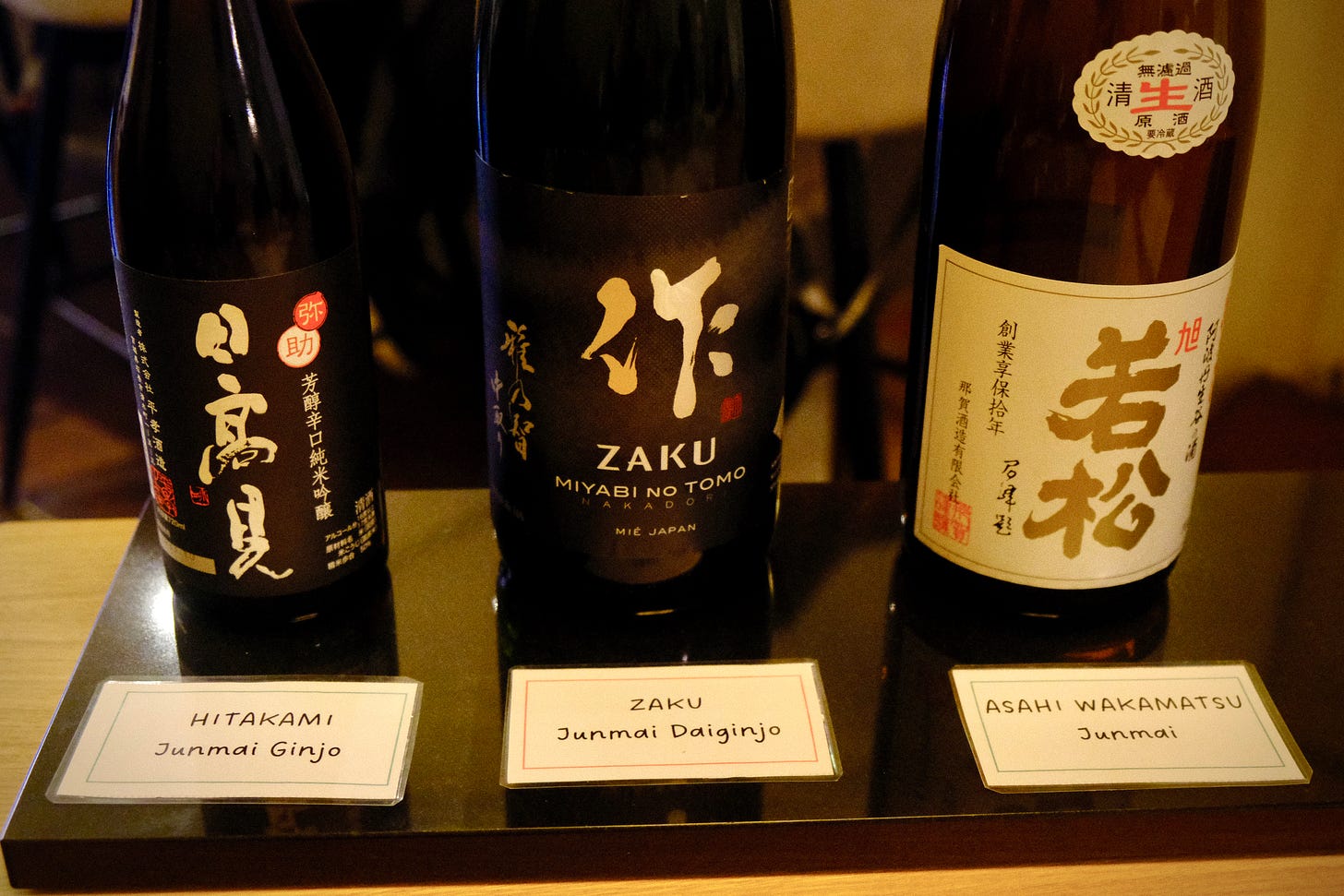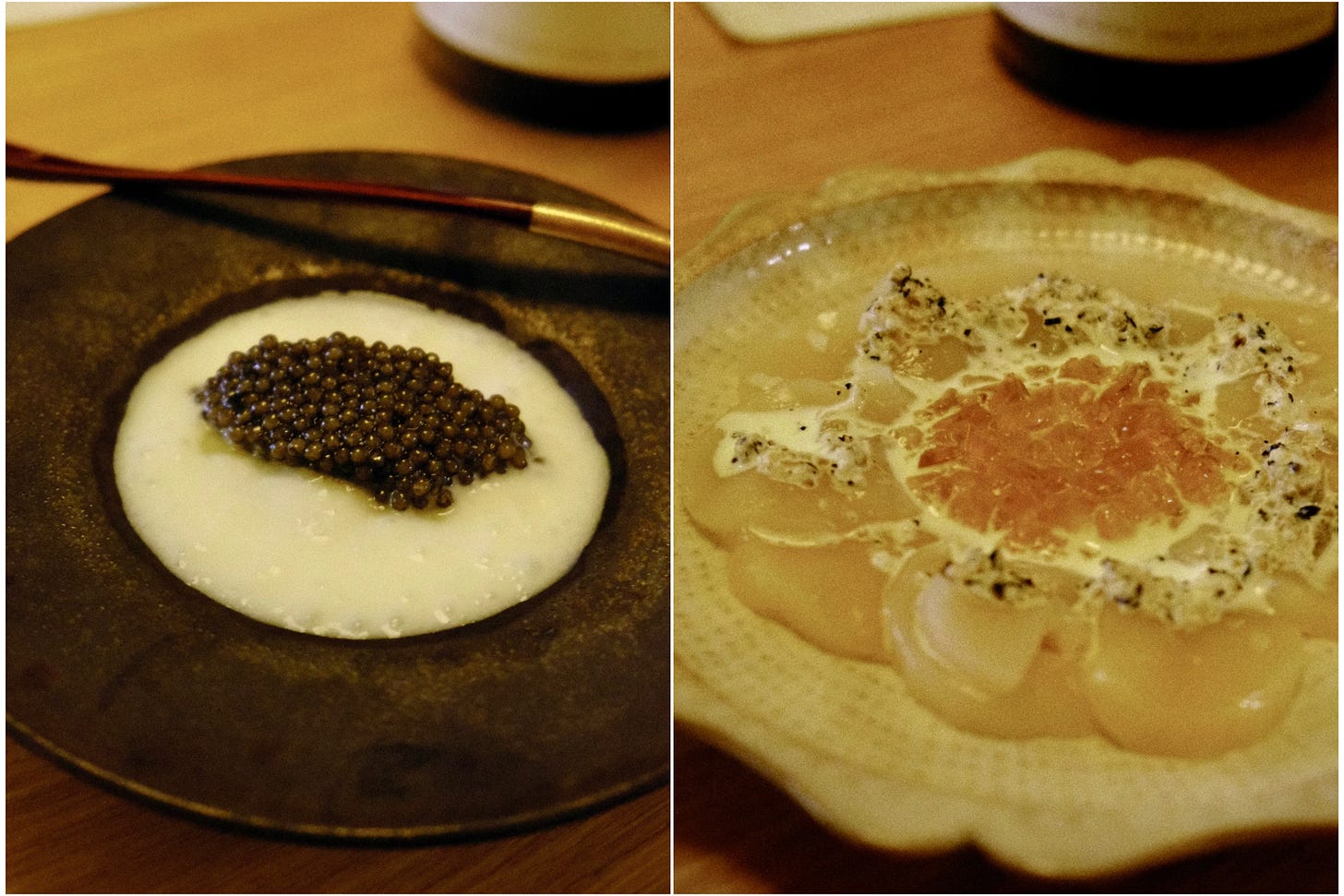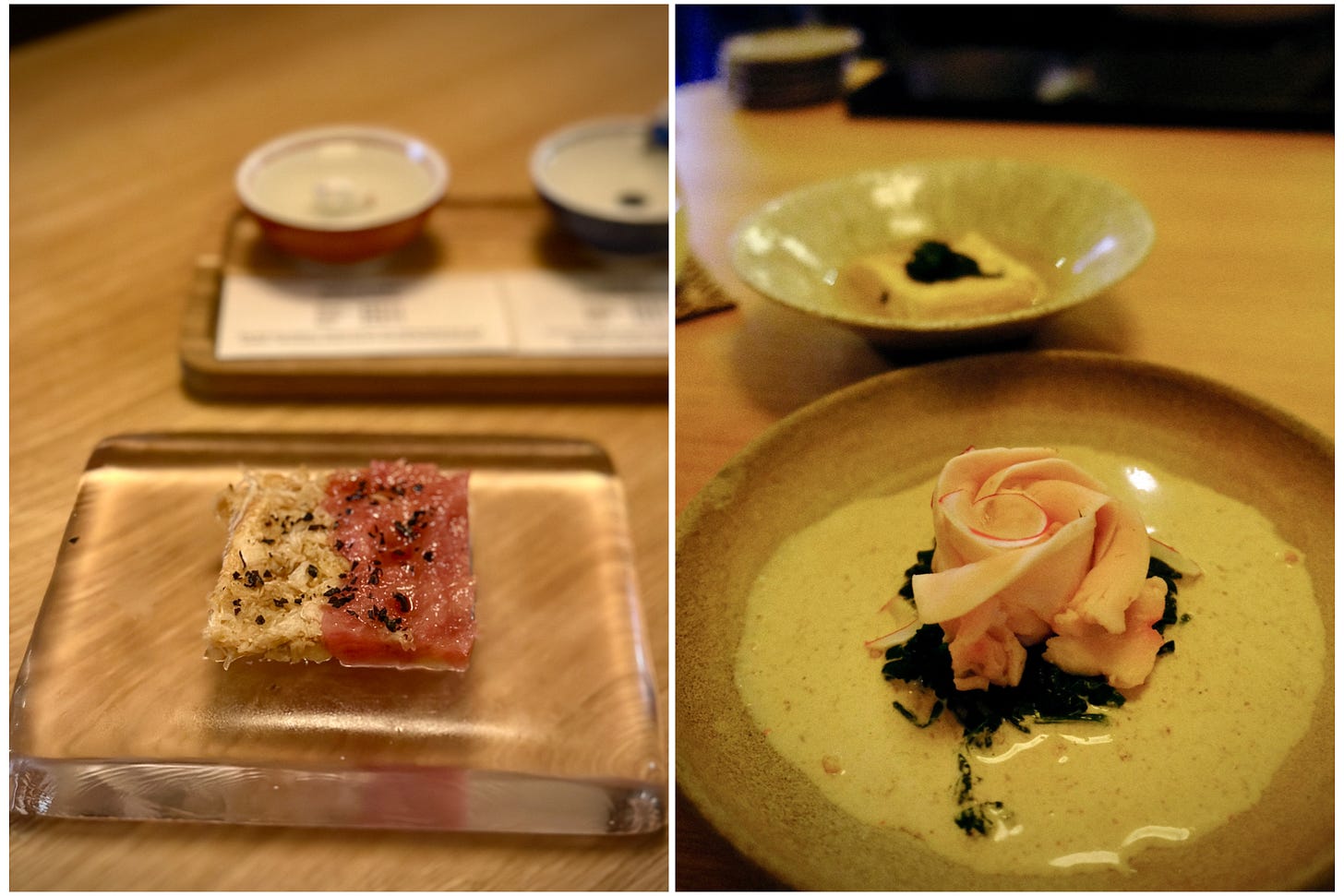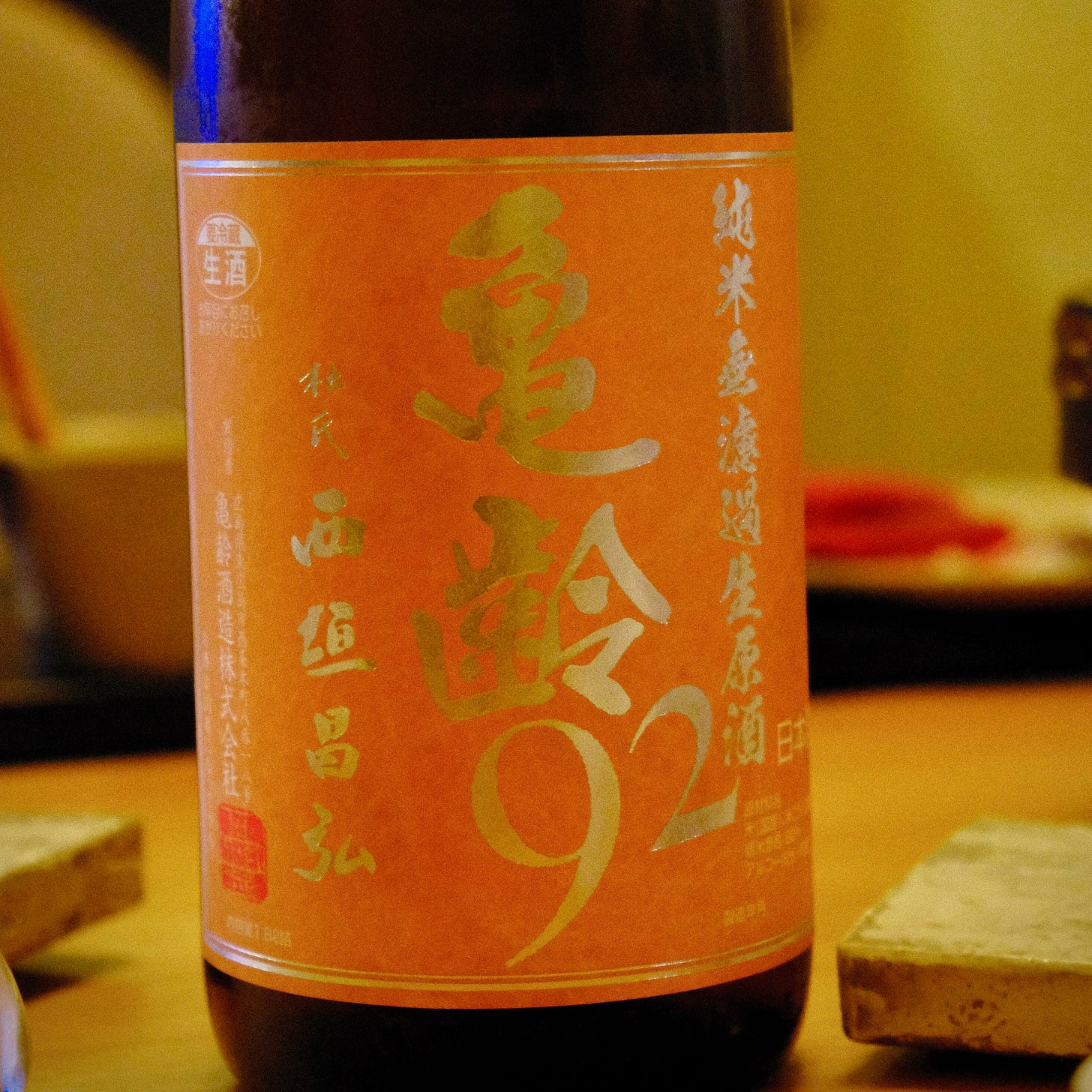What Sushi Pairing Taught US About Sake: A Night at Authentic Sushi Restaurant
A well-paced omakase revealed just how powerful sake-pairing basics can be.
I’ve always believed that sake is a natural match for sushi, a synergy built on shared ingredients, tradition, and versatility. But I didn’t expect just how deeply it could elevate the experience.
At a recent omakase dinner at TEWATASHI, an authentic sushi restaurant in Amsterdam, I found myself moved—not by anything flashy or unconventional, but by how perfectly the sake and the food danced together. Each pairing felt intentional, layered, and seamless. The more I thought about it, the more I realized: this wasn’t magic. It was the thoughtful application of pairing principles I’d studied—but now felt with all five senses.
In this post, I want to unpack what made that night so powerful: the sake styles involved, the underlying logic behind the sushi course structure, and the timeless rules of pairing that still work beautifully today. I hope sushi lovers can take something away for their next unforgettable sushi-and-sake experience.
How Sake Elevates the Journey: Lessons from Pairing Theory
Omakase sushi can be surprisingly tricky to pair. A single course might include raw and cooked fish, meat, vegetables, and a range of ingredients and seasonings—soy sauce, miso, sugar, vinegar—combined with citrus, herbs, and fermented elements. That diversity makes it hard for one or even a couple of drinks to work across the whole meal. It’s a challenge not only for wine, but also for sake, especially if you’re aiming for a "wow" experience.
According to the book "Sushi and Japanese Food Pairing Strategy" by the Sushi & Washoku(Japanese cuisine) Academy, there are some important clues to keep in mind—whether you're pairing with wine or sake.
First, avoid iron-rich drinks pairing with particularly raw fish with higher zinc. Iron and zinc can react with seafood and amplify fishy or metallic notes.
When using fish that naturally contain such elements, ingredients with masking effects—like wasabi, ginger, umami-rich sauces, higher alcohol, or warmer serving temperatures—can help to some extent. Sake has a natural advantage: its higher amino acid content and lower iron (roughly one-third that of wine) allow it to smooth over harshness without overwhelming delicate aromas.
Another principle is to match the core elements of the dish with the drink. This might sound obvious, but in all types of food pairing, it's especially helpful to focus on key elements of the dish and select a sake (or wine) that shares those same qualities.
In sake, aroma pairing might involve citrus peel (like yuzu or sudachi), or spice and earthiness (such as ginger, Japanese pepper, or wasabi). Palate or texture pairing might emphasize amino acids (from broth or umami), salinity, or minerality.
Finally, temperature matters. Serving sake slightly warm can enhance its masking power and soften the edges of umami-rich or fatty dishes—something dry white wine often cannot achieve.
The Sake Spectrum: Understanding Types and Aromas
Let’s take a look at how sake expresses itself through aroma and texture. The Japan Sake and Shochu Makers Association(JSS) provides an excellent guide to the diversity of sake styles.
Different brewing and aging methods bring out a wide spectrum of aromas—from fruity and floral to nutty and roasted.
Ginjo is one of the lightest styles of sake. On the nose, it is fragrant, floral, fruity, and perfumed. The palate is clean, pure, delicate, crisp, silky, smooth, polished, and light-bodied. Some examples feel almost air-light and transparent. Well-crafted Ginjo can be elegant, sophisticated, and graceful. These qualities come from its high polishing ratio (often under 60%) and low-temperature fermentation.
Junmai is fuller and more umami-driven. Aromas are ricey, nutty, mellow, and earthy. The palate is round, full-bodied, creamy, and grounded. It offers a wholesome, warm, and balanced impression—a comforting, food-friendly style.
Aged sake is the most complex style. Aromas include nutty, caramelized, oxidized, soy-like, and earthy notes, often with hints of dried fruit and spice. The palate is dense, rich, and velvety. Its character is mature, soulful, and contemplative, with a long finish.
Whether it’s floral Ginjo, umami-rich Junmai, or aged Koshu, each style has its place at the table. The key is understanding when and how to use them.
Matching Sake to a Full Omakase Experience
How do these sakes pair with sushi?
A traditional sushi course—especially in omakase—follows a thoughtful rhythm, guiding the diner from delicacy to richness. While each chef has their own style, the sequence is rooted in centuries of culinary wisdom.
At TEWATASHI, three textbook-perfect sakes were served. Along with an additional bottle, these sakes covered the entire meal.
Left: HITAKAMI Junmai Ginjo — Delicate and floral. A harmonious blend of fruitiness and umami. Clean and satisfying finish. Middle: SAKU Junmai Daiginjo — Crisp and nuanced, with notes of honeydew, lemon peel, and white flowers. Smooth and clean. Right: ASAHI WAKAMATSU Junmai — Rich and multi-layered, with a unique aroma reminiscent of aged pickles. Sweet, mellow, and mature in addition to racy flavor.
Sakizuke
Eggplant with caviar and scallop carpaccio with truffles may sit slightly outside the realm of traditional Japanese cuisine, but their salty and umami-rich profiles made them ideal partners for sake. Despite being appetizers, both dishes carry noticeable aroma and depth. HITAKAMI Junmai Ginjo was crafted for sushi and the pairing worked beautifully—it offered a subtle nose, which balanced gentle umami, complementing the complexity without clashing. In contrast, the more aromatic ZAKU Junmai Daiginjo felt slightly at odds with the fragrant profile of the dishes, competing rather than harmonizing.
Light course
As part of the lighter courses, sashimi was served—red and white, almost as if dressed for a festive occasion. The red was lean tuna; the white, snow crab, finished with infused oil.
Separately, a dish of chicken breast was served, gently cooked at a low temperature. It was tender, almost silky, with a subtle sweetness. The juicy meat was beautifully lifted by the aromatics of ZAKU Junmai Daiginjo, which wrapped around the delicate flavors like the perfect garnish—enhancing without overwhelming. It was a quiet harmony—unexpected, but deeply satisfying.
Yakimono
Then came a shift in temperature and texture: grilled eringi mushrooms and wagyu beef with Saikyo miso, served with sansho-braised oysters. For the dishes, bold WAKAMATSU Junmai was a natural match. Particularly, its depth and earthy tone resonated with the grilled mushroom’s umami. Saikyo miso, a sweet miso from Kyoto, matched the sake’s mellow richness, creating a layered, savory harmony.
Nigiri
The nigiri sequence followed:
Left: The ika (squid) was served with just a touch of salt and hirame (flounder cured with kombu)—delicate and briny. Paired beautifully with HITAKAMI Junmai Ginjo. Center: Scampi with caviar and seared nodoguro (blackthroat seaperch)—creamy and smoky. Anchored by WAKAMATSU Junmai’s richness. Right: Akami (lean tuna) and ōtoro (fatty tuna)—bold and luxurious. Here, we added KIREI Junmai Ginjo 92 Genshu, which offered lift and structure. Bold and umami-rich. Its subtle grassiness, dry finish, and full body balanced the richness of the tuna.
Depending on the restaurant, a few rolls may follow—kampyo or negitoro maki—to round out the experience. Finally, a light soup and seasonal dessert cleanse the palate and close the meal gently.
Key Takeaways for Your Next Sushi Night
In a traditional omakase meal, the course begins gently—with chilled appetizers, light sashimi, and warm grilled or simmered dishes—building in richness, warmth, and intensity. Then, with the first piece of nigiri, the flow resets. The progression begins again, this time through a new rhythm: from delicate white fish to rich tuna and eel.
And remember, in classic sushi, the vinegared rice is served ever so slightly warm—bringing harmony and softness to each bite.
So what about sake?
You may have noticed: at TEWATASHI, just four bottles carried us through the entire experience—twice. Sake is typically served cool, but by the second round, it had gently warmed—pairing beautifully with the slightly warm sushi rice. That’s the beauty of sake. Unlike wine, sake can loop back and rejoin the meal in new ways.
Start with something light in style: a floral Ginjo or even a sparkling sake.
Aromatic types like Ginjo or Daiginjo can work well—depending on whether the dish’s aromas match or clash. Be careful with strongly scented foods.
Move to Junmai or Kimoto for grilled dishes or anything high in umami.
Finish with something bold: warm, aged, or earthy styles work beautifully with rich nigiri like toro or anago.
Even at home, trying two or three small bottles with store-bought sushi can make the meal more memorable.
When you slow down and pair with intention, food and drink stop being background—they begin to speak to each other.
You might just fall in love with the whole experience all over again.
Every Tuesday, I dive into core sake topics from a wine-informed perspective—clear, grounded, and always rooted in flavor. On Fridays, I explore real-world food pairings that go beyond the usual suspects, from Thai curries to miso-laced pastas.
🍷 If sake is starting to feel like part of your beverage world—not just a side note—this is your invitation to go deeper.
👉 Subscribe now and join a growing group of wine-savvy professionals who are adding sake to their vocabulary, list by list, shelf by shelf, bottle by bottle.
💌 Are you a fellow Substack writer exploring food, wine, or fermentation? If this post aligns with your work or audience, I’d be honored to be part of your recommendations. Let’s build a stronger, more flavorful conversation—together.










